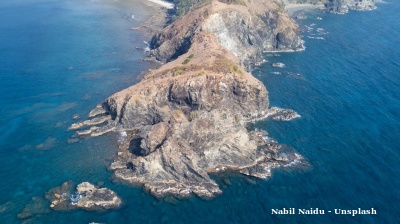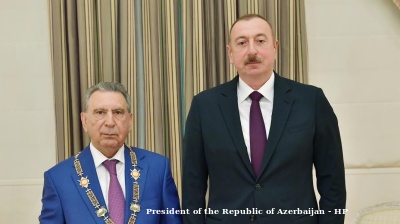The Georgian economy has bounced back fast from the series of sharp shocks of recent years, and rather than being dragged down by the polycrisis that has been unfolding, growth has accelerated in the last year: in 2022 Georgia’s GDP was up by 10.1%, foreign direct investment (FDI) reached record highs and the tourism sector has entirely recovered.
At the Georgian Investment summit held in London on March 16, Noshrevan Lomtatidze, Director of International Economic Relations at the Georgian Foreign Ministry, outlined the plan for further development that includes a focus on privatisation, boosting FDI, improving Georgia’s rating in the World Bank’s Ease of Doing Business, digital transformation, improving transport links and energy independence.
“Georgia has put in a strong economic recovery following the coronavirus pandemic and has proved to be very resilient to the shock of the war in Ukraine that has caused devastation in Ukraine and its people and also to also had affects well beyond the region,” said Lomtatidze.
Lomtatidze says growth in the last year has been broad-based, with exports, manufacturing, FDI all outperforming and revenues earned from tourism recovering to also set a new record high.
Macro stability
Georgia’s economy has been doing well in recent years, growing by about 5% a year on average over the last five years, but the pace of growth accelerated in 2022 to 10.1%, stimulated by a record amount of investment and the arrival of economic migrants from Russia, mostly from the IT industry, that bought their savings and work with them.
Counterintuitively, it appears that the influx of labour and cash has led to a bump in consumption and the migrants have acted as an economic stimulus.
The macroeconomic indicators are almost all in good shape too. Inflation was a manageable 9.3% in 2022 (chart), the debt to GDP ratio a reasonable 55.1% and falling, and reserves an acceptable 3.3 months of import cover. Moreover, the dollar deposits at Georgian banks fell to 56.2%; high dollarisation of the sector has been a long-standing problem. The current account deficit of 7.2% remains one of the less good results, but that is also predicted to fall to 6.5% in 2024, says Fitch. Based on these results, if Georgia was already in the EU it would be amongst the top five best performers, says Vazil Hudak, an economic advisor to the prime minister, who was also on a panel at the Georgian Investment day organised by Strategic Council.
FDI into Georgia reached a record $2bn in 2022, equivalent to 8% of GDP , which gave the economy a boost, Lomtatidze said. The total stock of FDI has now reached $8.5bn in an $24.7bn economy, Hudak added, who highlights that a big chunk of this money has arrived in just the last few years, thanks to improving relations with Europe.
“Trade has improved thanks to a Deep and Comprehensive Free Trade Area (DCFTA) with the EU that has helped in the post-COVID period,” says Hudak. “Due to the sanctions on Russia Georgia is becoming an ever more important corridor for trade between Europe and Asia that can reach a population of about 3bn people.”
The investment was broad based into a number of sectors from retail through manufacturing and into energy. The biggest foreign investors are the UK, Spain and the US that together accounted for 46% of all the FDI in 2022.
The government finances have also improved with a budget deficit down to 3.1% and public debt falling from 60% back down to pre-COVID level of 39% of GDP.
“Georgia has been a top economic performer, with more than 5% GDP growth a year over the last five years, and it accelerated in 2022,” says Lomtatidze.
The EBRD backed that assessment up. George Akhalkatsi, the country manager for Georgia and Armenia, said that the EBRD has invested a total of €5bn into Georgia over the last 30 years, but it has invested €1.5bn of that in just the last four years.
“After the COVID crisis we doubled the amount we had been investing to €600mn a year for two years to help the government, and two thirds of that went into sustainable infrastructure, including renewables,” said Akhalkatsi.
Fitch gives the country a 'BB' rating, one of the highest in the region and in its January review upgraded its outlook from stable to positive.
“There were many things that went into the upgraded outlook: recovering gross international reserves (GIR); falling debt to GDP ratio; recovering tourism; the arrival of Russian refugees and their capital inflows; and a sound macroeconomic policy thanks to the help of the IMF,” says Douglas Winslow, the senior director of sovereign debt at Fitch. “Considering we had a record 51 downgrades in 2021, just holding your own in this environment is a significant outperformance. A third of European sovereigns currently have a negative outlook.”
Tourism also recovered in 2022 with 9.3mn inbound visitors – three times the entire population of Georgia. “Tourism has fully recovered in 2022 and contributed to 9% of GDP,” said Lomtatidze.
“Some of these visitors were Russians fleeing the belligerent Putin regime, but their share in the over inbound visitors remained small, although the effect on consumption and the value of the lari was a lot more profound,” Koba Gvenetadze, Governor of the National Bank of Georgia (NBG), told bne IntelliNews on the sidelines of the Uzbek Economic Forum in Samarkand in November.
“Migration has played a very important role. The large foreign exchange inflows to Georgia from other countries [have] strengthened the currency and helped contain inflation,” Gvenetadze said.
Following the 2022 Russian invasion of Ukraine, an estimated 100,000 Russian citizens are estimated to have left Russia by mid-March 2022 as economic migrants to many countries. In September 2022, when the partial mobilisation began, another 222,274 people entered Georgia alone from Russia, according to the Georgian Ministry of Internal Affairs, as Georgia is one of the few countries Russians don't need a visa to enter.
However, with a total of some 300,000 Russians now living in Georgia, that still makes up only approximately 5% of the total inbound visitors in 2022.
East-West trade corridor
The extreme sanctions on Russia and war in Ukraine is remaking many maps. Russia’s gas exports that used to predominately go west are now being redirected and will go east. Much of the land-borne trade from Asia to Europe too used to go through Russia, but now with the sanctions, the route through Georgia that goes under the Caspian and on Turkey via Azerbaijan will now take precedence.
Georgia is strategically placed between Europe and Asia and has access to a market of over 3bn people, says Lomtatidze.
“The route between East and West traversing the Caucasus has become even more strategically significant after the harsh sanctions regime imposed on Russia has effectively closed the more northern route via the Trans-Siberian railway, forcing trade to go below the Caspian Sea rather than to the north of it,” he adds.
“We have a free trade area that already captures 2.3bn and includes the likes of the UK, Turkey, the other Commonwealth of Independent States (CIS) countries and China,” says Lomtatidze. “And we are in talks to extend membership to Israel, UAE and India among others.”
The EU already has an important and fast-growing exports that expanded by 31% in 2022 of which the EU had a 16% share of exports and 22% share of imports – double the level from a year earlier.
The picture is made more complicated by the ongoing close ties between Georgia and Russia, despite the fact the two countries have yet to re-establish diplomatic relations since the eight-day war in 2008. As has been reported, Georgia is currently more economically dependent on Russia than at any time since its dependence thanks to booming trade relations. But that is not to say Russia dominates, as when all is said and done Georgia has built up a well-diversified export partners portfolio and could afford to break off relations with Russia completely if it so chose. Instead, it appears that Georgia has been opportunistically taking advantage of Russia’s woes to boost exports.
Georgia-Russia trade turnover exceeded $467mn in January-February 2023, which is 48% higher than the same figure for 2022, the National Statistics Office of Georgia reported in March.
Russia now ranks first among Georgia's major trading partners. In January-February, which accounted for 16.1% of Georgia's foreign trade – it was on a par with Georgia’s trade with the whole EU.
In the first two months of this year, Georgia exported over 36,000 tonnes of ferroalloys to Russia for over $45mn, 8,000 tonnes of natural wines worth more than $23mn, 978 cars for over $13mn, more than 19,000 tonnes of mineral and fresh waters for over $10mn, and more than 2,000 tonnes of alcoholic beverages for around $9mn.
In turn, Russia supplied over 149,000 tonnes of oil and oil products to Georgia in January and February for over $108mn. Russia also delivered to Georgia over 264,000 tonnes of oil gases and hydrocarbons (over $68mn), more than 32,000 tonnes of wheat and meslin (over $10mn), over 47,000 tonnes of hard coal and solid fuel derived from it (over $8.2mn), and over 25,000 tonnes of wheat or wheat-rye flour mix (over $8mn), reports Galt & Taggart, a local investment bank.
Turkey ranked second among Georgia's trading partners in January-February 2023, with mutual trade exceeding $387mn, an 8.8% increase over the same indicator in 2022. China took third place, with a trade turnover of $246mn, a 3.3% increase on last year's figures.
Georgia's total foreign trade turnover in January-February 2023 was more than $2.8bn, 12.3% higher than in 2022. Exports climbed by 20.3% to over $914mn, while imports grew by 9% to around $2bn. In January 2023, the negative balance of foreign trade exceeded $1bn (36.9% of total trade turnover).
Georgia is making money again and has big plans for the future. With a strong commitment to a pro-EU direction the task ahead for the government now is to “do its homework,” says Hudak, and implement the reforms the EU is demanding before it can be granted candidate status.
Features

Andaman gas find signals fresh momentum in India’s deepwater exploration
India’s latest gas discovery in the under-explored Andaman-Nicobar Basin could become a turning point for the country’s domestic upstream production and energy security

The fall of Azerbaijan's Grey Cardinal
Ramiz Mehdiyev served as Azerbaijan's Presidential Administration head for 24 consecutive years, making him arguably the most powerful unelected official in post-Soviet Azerbaijan until his dramatic fall from grace.

Ambition, access and acceleration – Uzbekistan’s Startup Garage opens free academy for entrepreneurship
Aim is to train 50,000 young founders by 2030.

Ukraine’s growing energy crisis promises a cold and dark winter
Since the summer, Kyiv has changed tactics. Given the almost complete failure of Western oil sanctions to curb Russian oil exports, it has been targeting Russian oil refineries. The Kremlin has struck back, targeting Ukraine's power system.




